Editor’s note: This is a guest post from powerlifter, strongman, and Starting Strength coach Matt Reynolds, owner of Barbell Logic Online Coaching.
If you’ve lifted weights for any significant amount of time, the odds are that you have struggled with bicep tendonitis. Maybe you didn’t know it was bicep tendonitis, but it basically felt like a dull, painful ache on the anterior (front) part of your forearm where it meets your bicep tendon (see image below).
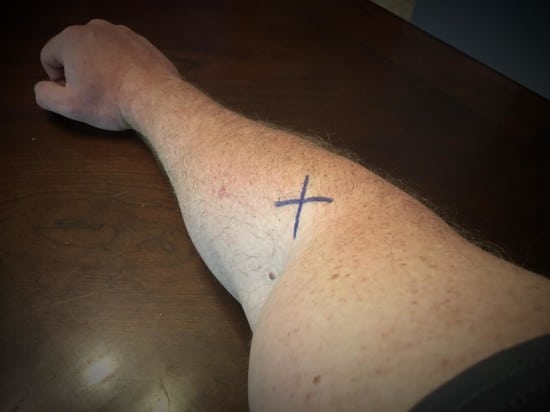
“X” marks the spot where you’ll feel the dull, aching pain from distal (lower) bicep tendonitis.
Bicep tendonitis is very simply a painful inflammation of the bicep tendon, caused by overuse or irritation.
If you’ve been inflicted with this pain, you’ve probably tried everything to alleviate it: ice, tendonitis bands, ibuprofen, laying-off bench press or bicep curls, etc., but nothing seemed to help. And even if it did, it just came back again the first time you squatted or picked up your kiddo off the floor. The thing about bicep tendonitis is that it often goes away just as enigmatically as it came on. So can we really do anything to help it go away faster?
In short, yes.
I’ve trained thousands of people over the past 18 years, and developed a pretty large sample size to experiment with concerning dealing with bicep tendonitis. What we’ve come up with is a multi-step approach that mitigates not only pain, but also future flare-ups. Here are the 7 steps:
1. Traditional Approaches
The traditional methods of rest, ice, compression, and anti-inflammatories do seem to help some, but will never get rid of the problem completely. Continue to use all of these methods aggressively while trying a few additional approaches.
2. Rubber Band Extensions
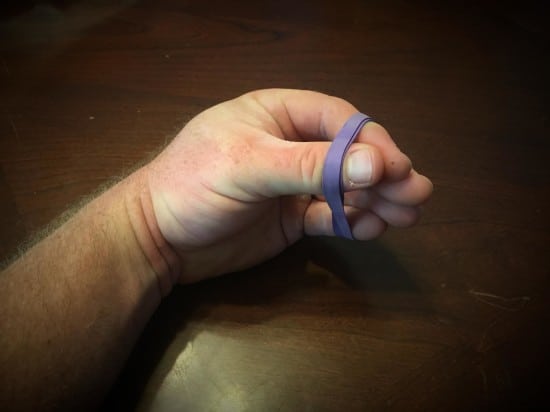
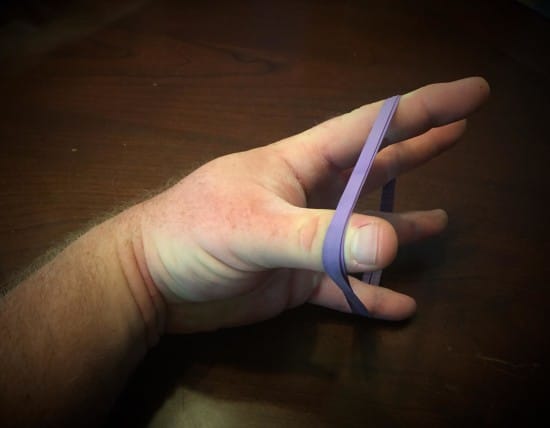
One of the problems that causes bicep tendonitis seems to be over-worked wrist and finger flexors (think curls), and under-worked wrist extensors (think reverse curls). By adding in work for the extensors at the end of every training session, we can both rehab current bicep tendonitis and “prehab” as to avoid future problems.
One of my favorite options for working wrist and finger extensors is to take a few rubber bands and wrap them around the ends of your fingers and then open up your hands and hold for a 3-second count, working against the bands. This can be done literally anywhere; it’s probably best to not do them in front of the dumbbell mirrors at the gym.
3. Use Correct Hand Position When Squatting
Another major cause of bicep tendonitis is using an incorrect hand and wrist position in the squat. Most people wrap their thumbs around the bar when they squat, and in doing so, their wrists and hands are forced into an uncomfortable extension (bent backwards).
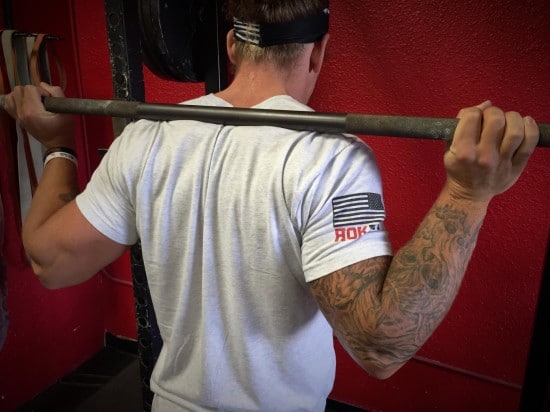
Bent wrists from improper hand position.
This places torsion (a twisting motion) on the elbow and causes bicep tendonitis to flare up. A simple “fix” for this is to make sure your wrist is neutral when you squat; it shouldn’t be bent forward or backward. This will make sure the torsion is off your elbow and bicep tendon during the squat.
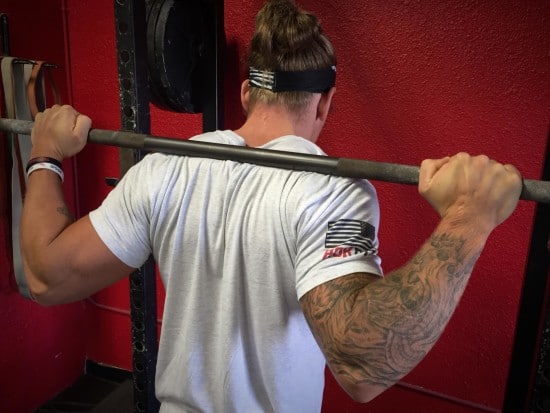
A proper neutral grip.
4. Soft Tissue Lateral Shear
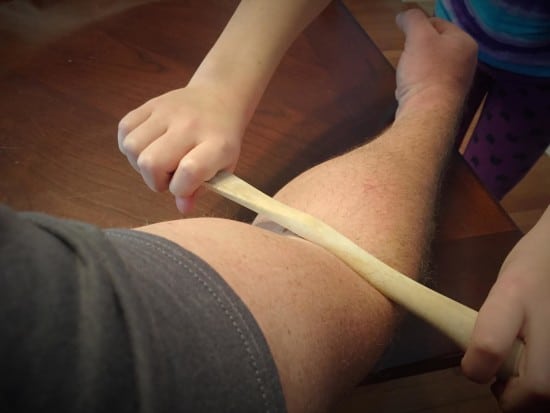
The approach that seems to help the most is aggressive soft tissue lateral shear. What does that mean and how do you do it? Go to the kitchen and get a wooden spoon with the thickest handle you can find. Lube up the area on your arm with some lotion or baby oil. Hand the wooden spoon to your wife or significant other, and have them scrape and drag the handle of the wooden spoon down your arm — from about 3” above the point of pain to about 3” below the point of pain. They should make 15 or 20 passes at it, moving left and right and working from the bicep towards the hand. This will feel like giving childbirth and will almost certainly bruise the hell out of your arm, but it will help. I promise.
Another option is a Dixie cup ice massage. Go buy a cheap box of paper Dixie cups. Fill 6 or 7 of them full of water and put them in your freezer. Once they are frozen, take one out, tear off the top ½-inch of paper, and begin to use the edge of the ice to “dig” into the painful area. As you dig, the area will begin to numb up because of the ice, and will allow you to work deeper into the tendon.
5. Hi-Rep Curls
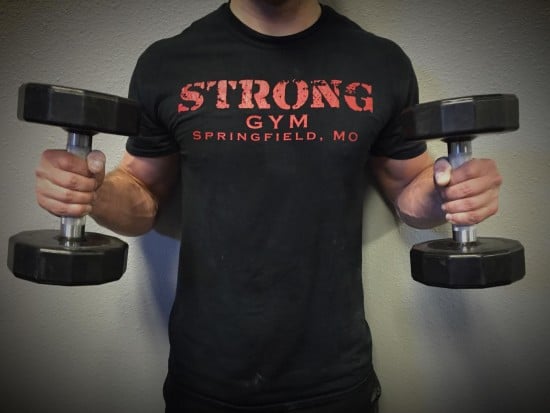
High reps, and light weights are typically a no-no for Art of Manliness readers. But when it comes to rehab, they often really help the situation by pumping in massive amounts of fresh blood (which carry nutrients to the injured area). This is super important for tendons because there is very little blood flow to them anyway, so every little bit helps.
My go-to exercises here are high-rep dumbbell hammer curls (2-3 sets done for 20-25 reps) and high-rep (2 sets of 20-25 reps) reverse wrist curls (images below). If the tendonitis is really bad, I’ll actually do these both before and after training to pump the area with fresh blood.
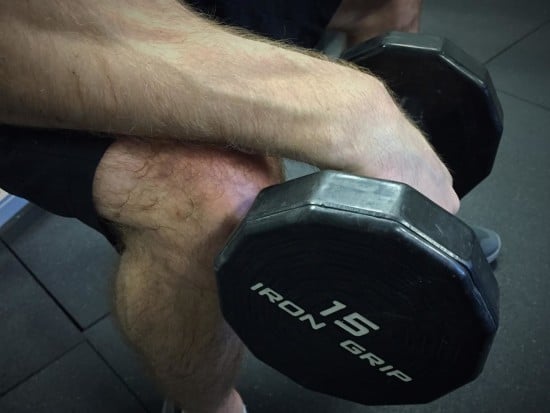
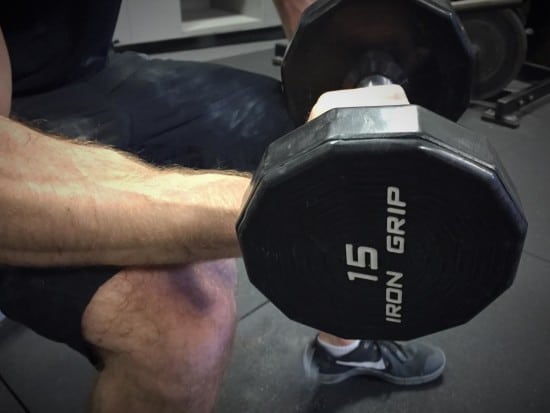
6. Utilize the Hook Grip When Deadlifting

Another interesting option is to switch to the hook grip for your deadlifts. So what is a hook grip? A hook grip is what all Olympic lifters use to grab the barbell for cleans and snatches. Basically you grab the bar, double overhand, wrapping your thumb around the bar first and then “grabbing your thumb” from the other side of the bar with your index and middle finger. This does two things: One, it doesn’t put a ton of pressure on your bicep tendon of your supinated (under) hand on a deadlift. I’ve seen many bicep tendons completely tear during a max effort deadlift when a mixed grip (over-under) is used. And two, it doesn’t cause torso twisting during the deadlift, which can lead to myriad problems, including strained erectors, obliques, herniated discs, etc.
7. Horse Liniment + Elbow Sleeves
Finally, for those of you who live in rural areas (and those who don’t or can’t order online), you can use horse liniment on the area before training and then put on elbow sleeves, which provide heat and compression to the area. Horse liniment is basically the same thing as Icy Hot, or Capsaicin, or Bengay, but it’s a bit more powerful (usually menthol or capsaicin or both is the active ingredient), and it’s significantly cheaper, as you can usually get a good-sized bottle that will last you six months for around $10. All of these things (including Icy Hot-type products) are nothing more than a skin irritant, which takes our mind off the tendonitis pain, as well brings additional blood flow to the area. The elbow sleeves help in a similar way, using compression and heat to “turn-off” the pain receptors in some manner.
In the end, bicep tendonitis is a giant pain in the…bicep tendon. But there are things we can do to help blunt it, and minimize the pain so that we can train around it. Bicep tendonitis should never keep you out of the gym. The more approaches you use, the better chance you have at a quick recovery for your swollen, painful bicep tendon.
_____________________________


